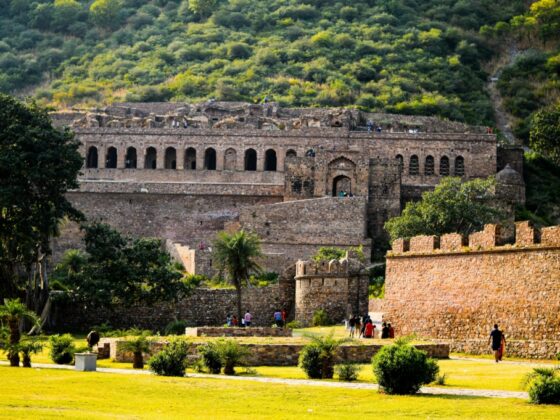Rajasthan, known for its rich cultural heritage, has upheld the tradition of wall murals for centuries. These stunning artworks decorate palaces, havelis, and temples, showcasing the grandeur of Rajasthan’s royal past. Vibrant colors, intricate patterns, and storytelling themes make Rajasthani wall murals a timeless expression of artistry and tradition. The ancient art of making Rajasthani wall murals continues to thrive, showcasing intricate designs, vibrant colors, and cultural stories that reflect Rajasthan’s rich heritage.

The History of Rajasthani Wall Murals
Artisans in Rajasthan have practiced mural painting since ancient times, using natural pigments and organic materials to create long-lasting designs. Royal families and wealthy merchants commissioned these murals to enhance their havelis, temples, and stepwells. Cities like Shekhawati, Jaipur, Udaipur, and Jodhpur feature some of the most exquisite wall murals, depicting scenes from mythology, royal life, and folklore.
Techniques and Materials Used in Rajasthani Murals
Artisans follow traditional techniques to craft these magnificent murals, using:
- Natural Pigments: Colors such as ochre, indigo, and red come from minerals, plants, and stones.
- Lime Plaster Base: Artists apply multiple layers of lime plaster to create a smooth painting surface.
- Hand-Painted Designs: Fine brushes help in creating intricate patterns, figures, and decorative borders.
- Gold and Silver Embellishments: Some murals, especially in royal palaces, feature gold leaf and silver detailing for a luxurious effect.
Themes and Motifs in Rajasthani Wall Murals
Rajasthani murals feature diverse themes, including:
- Mythological Stories: Scenes from the Ramayana, Mahabharata, and tales of Lord Krishna.
- Royal Court Scenes: Depictions of kings, queens, and grand celebrations.
- Folk and Daily Life: Village festivities, processions, and traditional Rajasthani attire.
- Floral and Geometric Designs: Symmetrical patterns, lotus motifs, and peacock imagery.
Famous Places to See Rajasthani Wall Murals
1. Shekhawati Havelis
Often called the “Open-Air Art Gallery of Rajasthan,” Shekhawati’s havelis display breathtaking frescoes that narrate historical and cultural tales.
2. City Palace, Udaipur
The palace showcases beautifully preserved murals illustrating royal life, grand processions, and traditional Rajput architecture.
3. Mehrangarh Fort, Jodhpur
Wall murals inside the fort highlight Rajasthan’s vibrant artistic traditions and the legacy of Rajput rulers.
4. Amer Fort, Jaipur
This iconic fort displays stunning murals in Ganesh Pol and Sheesh Mahal, blending Mughal and Rajasthani artistic styles.
Why Rajasthani Wall Murals Remain Timeless
- Cultural and Historical Significance – These murals narrate Rajasthan’s history and traditions.
- Handcrafted Excellence – Skilled artisans create each mural using traditional methods.
- Aesthetic Appeal – The intricate designs and vibrant colors enhance architectural beauty.
- Preservation of Heritage – Restoration efforts ensure that these murals continue to inspire future generations.
Conclusion
The ancient art of making Rajasthani wall murals continues to reflect the artistic brilliance of Rajasthan. These murals do more than decorate historic structures; they preserve the essence of Rajput culture and folklore. The vibrant storytelling captured in these paintings continues to fascinate art enthusiasts and historians alike.


